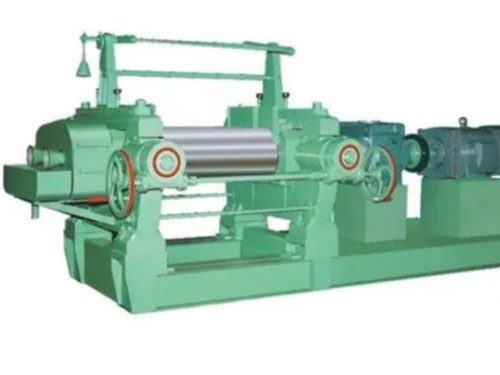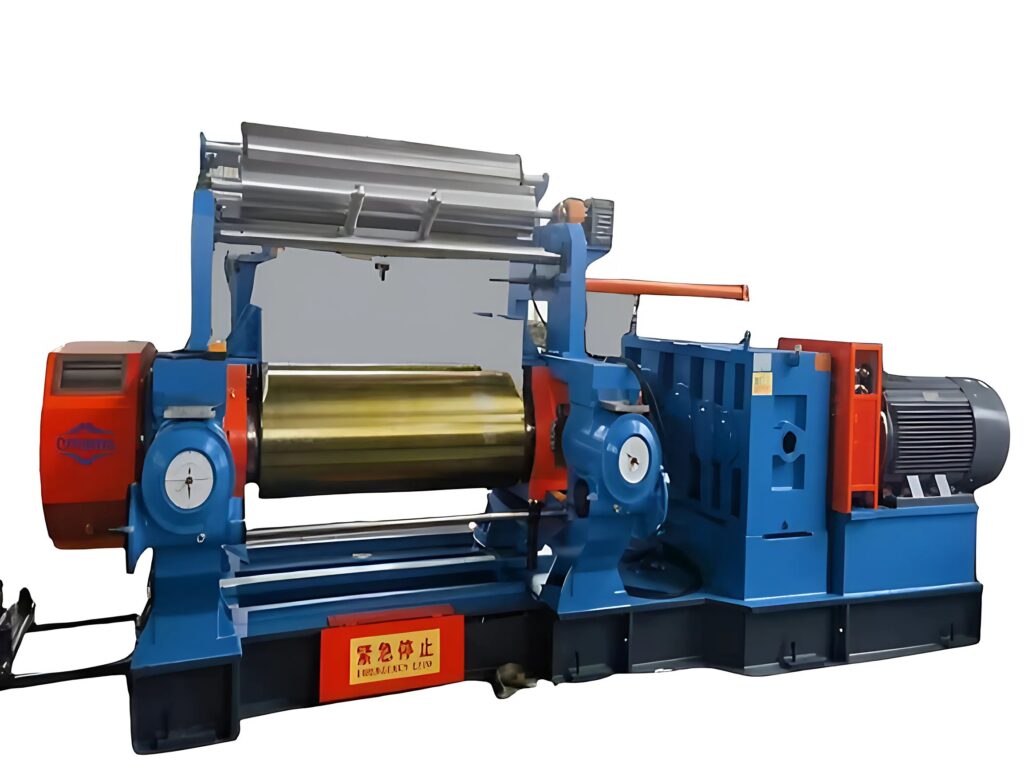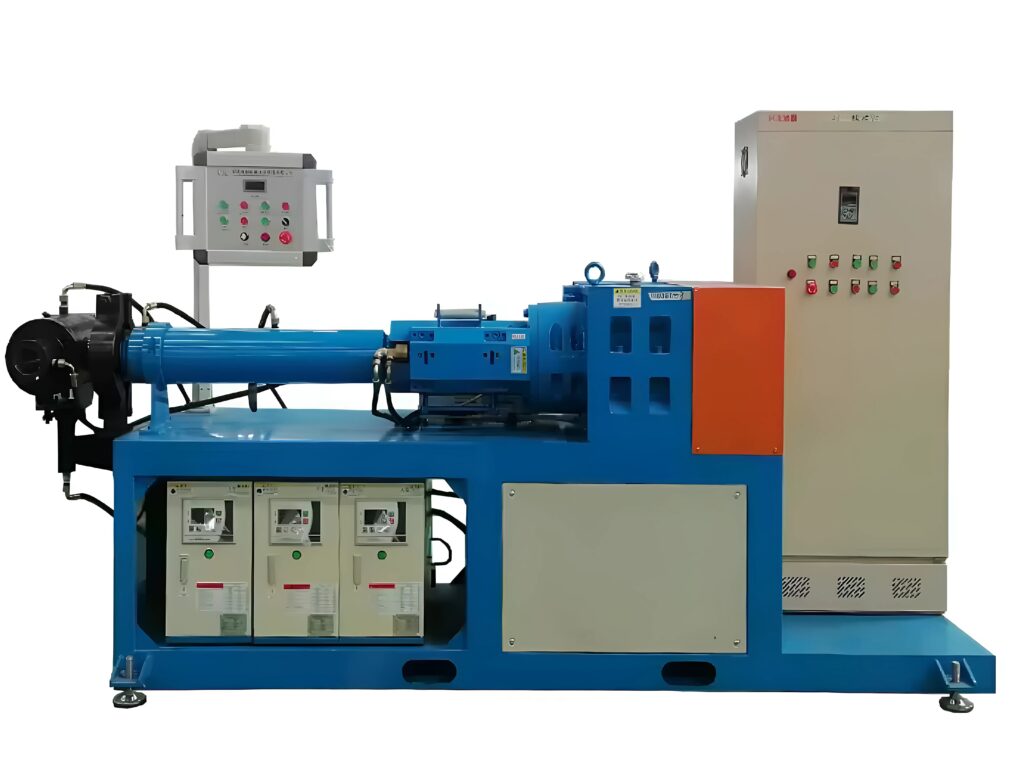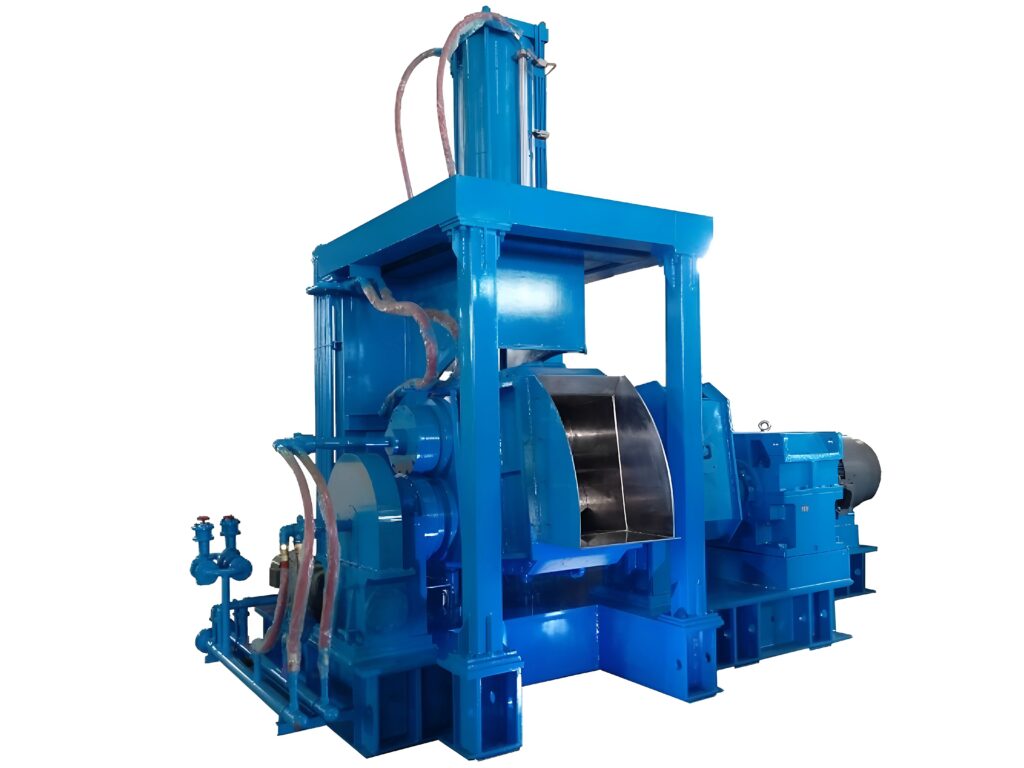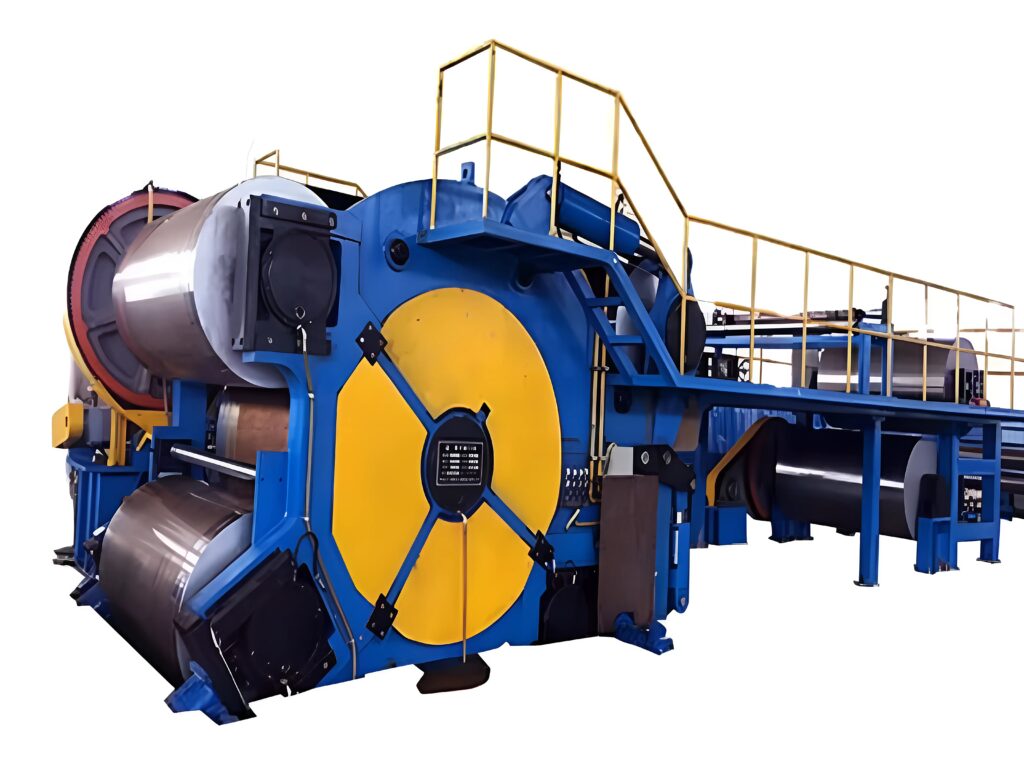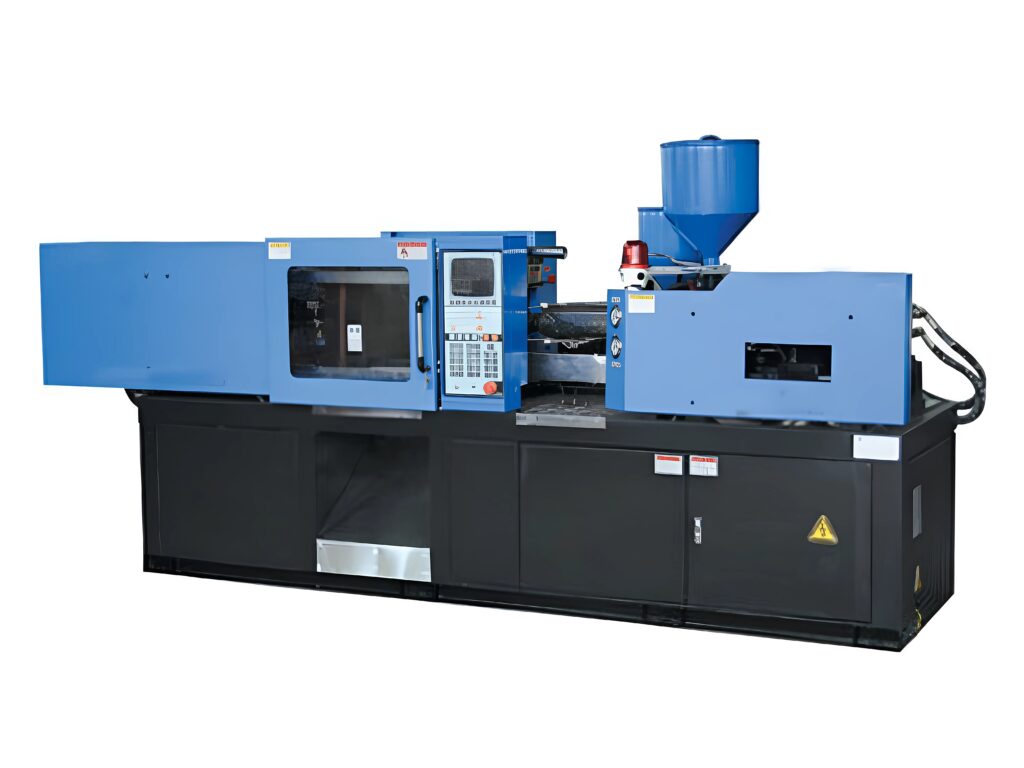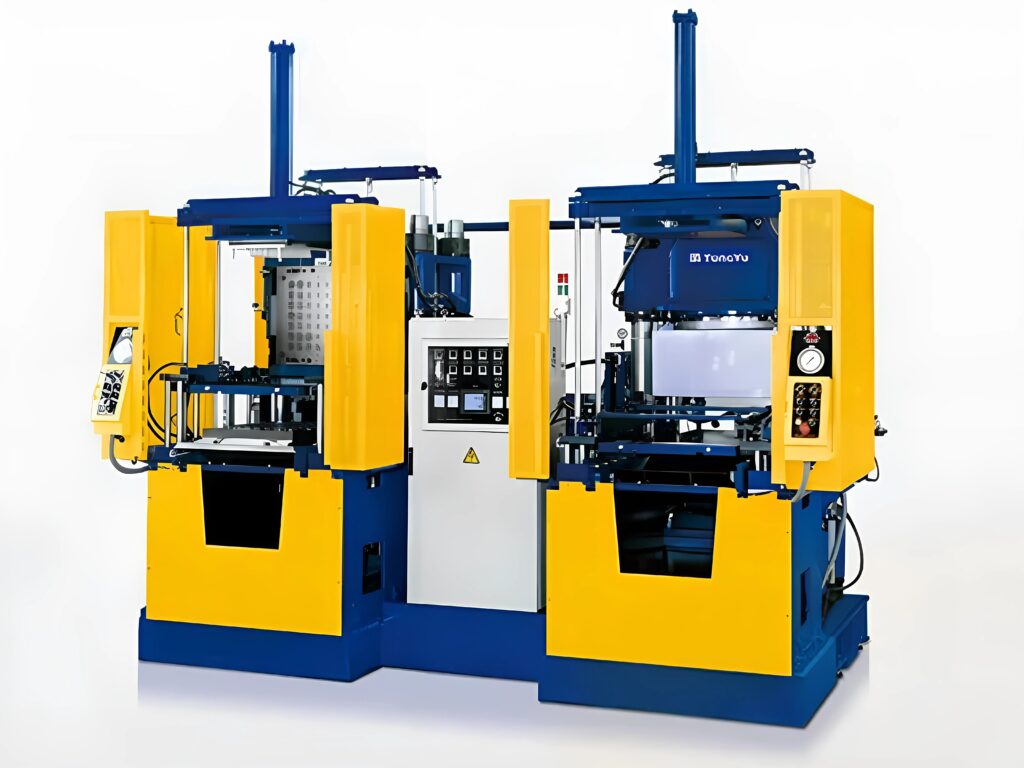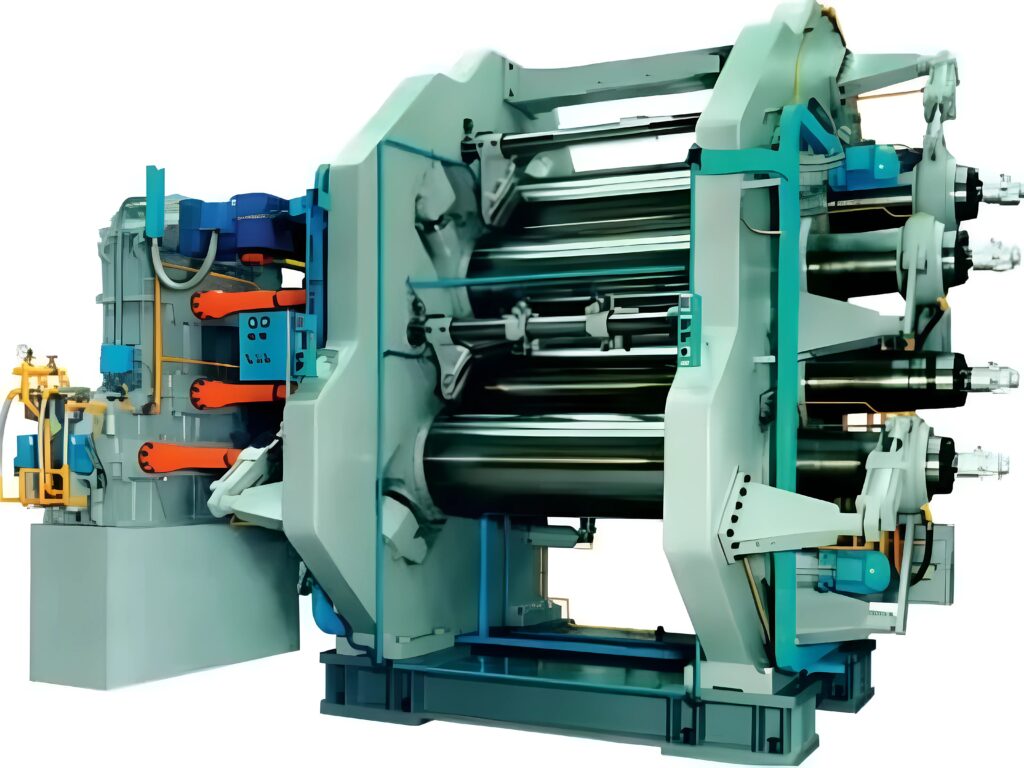What Type Of Machinery Used In Rubber Industry?
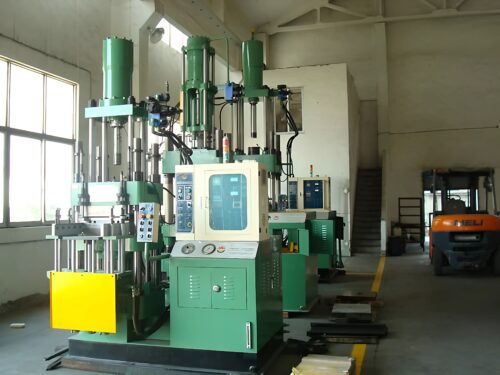
The rubber industry, a cornerstone of modern manufacturing, relies heavily on specialized machinery to transform raw materials into finished products. From tires to medical devices, rubber is integral to countless applications, each requiring precise and efficient production processes. This blog delves into the essential machinery used in the rubber industry, highlighting their roles, functionalities, and significance.
1. Mixing Machinery –
i) Banbury Mixers: Banbury mixers are among the most critical machines in the rubber industry. They blend raw rubber with various additives like carbon black, oils, and chemicals to create a homogeneous compound. The mixer consists of two rotors that spin in opposite directions within a chamber, providing intense shearing and mixing actions. This results in a well-dispersed mixture essential for quality rubber products.
ii) Two-Roll Mills: Manufacturers use two-roll mills to blend and homogenize rubber compounds. These machines have two rollers. The rollers rotate towards each other. They rotate at different speeds. The rollers pass the rubber compound through them many times. This is to achieve a consistent texture and composition.
2. Processing Machinery –
i) Extruders: Rubber extruders shape rubber compounds into continuous profiles. These profiles include tubing, hoses, and seals. The machine forces the rubber through a die of the desired cross-sectional shape. Extruders are crucial for producing long, uniform rubber products efficiently.
ii) Calenders: Calenders are used to produce sheets of rubber with uniform thickness. This machine consists of multiple rollers through which the rubber compound passes, gradually reducing its thickness. Calendering is essential for making products like rubber sheets, conveyor belts, and floor mats.
iii) Injection Molding Machines: Manufacturers use injection molding machines to produce complex rubber components. The process involves injecting hot rubber into a mold. It’s cooled and becomes the desired shape. Manufacturers use this method to produce items such as gaskets, seals, and rubber toys.
3. Curing Machinery –
i) Vulcanizers: Vulcanization is a process that enhances the elasticity and strength of rubber by adding sulfur and applying heat. Vulcanizers, also known as curing presses, carry out this process. We place rubber in molds. The machine applies heat and pressure to cure it. This transforms the rubber into a durable product.
ii) Autoclaves: Autoclaves are big, pressurized ovens. Manufacturers use them for vulcanizing rubber products that cannot fit in standard vulcanizers. They provide uniform heat and pressure, ensuring consistent curing. People often use autoclaves for large or shaped items. These items include hoses and rubber linings.
4. Cutting and Finishing Machinery –
i) Cutting Machines: Cutting machines are used to trim rubber products to the desired shape and size. These machines range from simple manual cutters to advanced computer-controlled systems that ensure precision and accuracy.
ii) Buffing Machines: Buffing machines are used to smooth and finish the surface of rubber products. This process is essential for improving the appearance and performance of the final product, especially in applications where surface quality is critical.
iii) Grinding Machines: We use grinding machines to make rubber parts the right size and surface finish. They’re common in tire production. For safety and performance, we need exact tolerances.
5. Quality Control and Testing Machinery –
i) Rheometers: Rheometers measure the flow and deformation properties of rubber compounds. This information is vital for understanding the material’s behavior during processing and in final applications, ensuring consistent quality.
ii) Tensile Testing Machines: These machines test the tensile strength and elongation properties of rubber materials. By applying controlled forces, they provide data on the material’s durability and elasticity, which is crucial for quality assurance.
iii) Hardness Testers: Hardness testers determine the hardness of rubber products, an important factor in their performance. These tests ensure that the rubber meets the required specifications for its intended application.
For more information Visit Here

 Compression Molding
Compression Molding